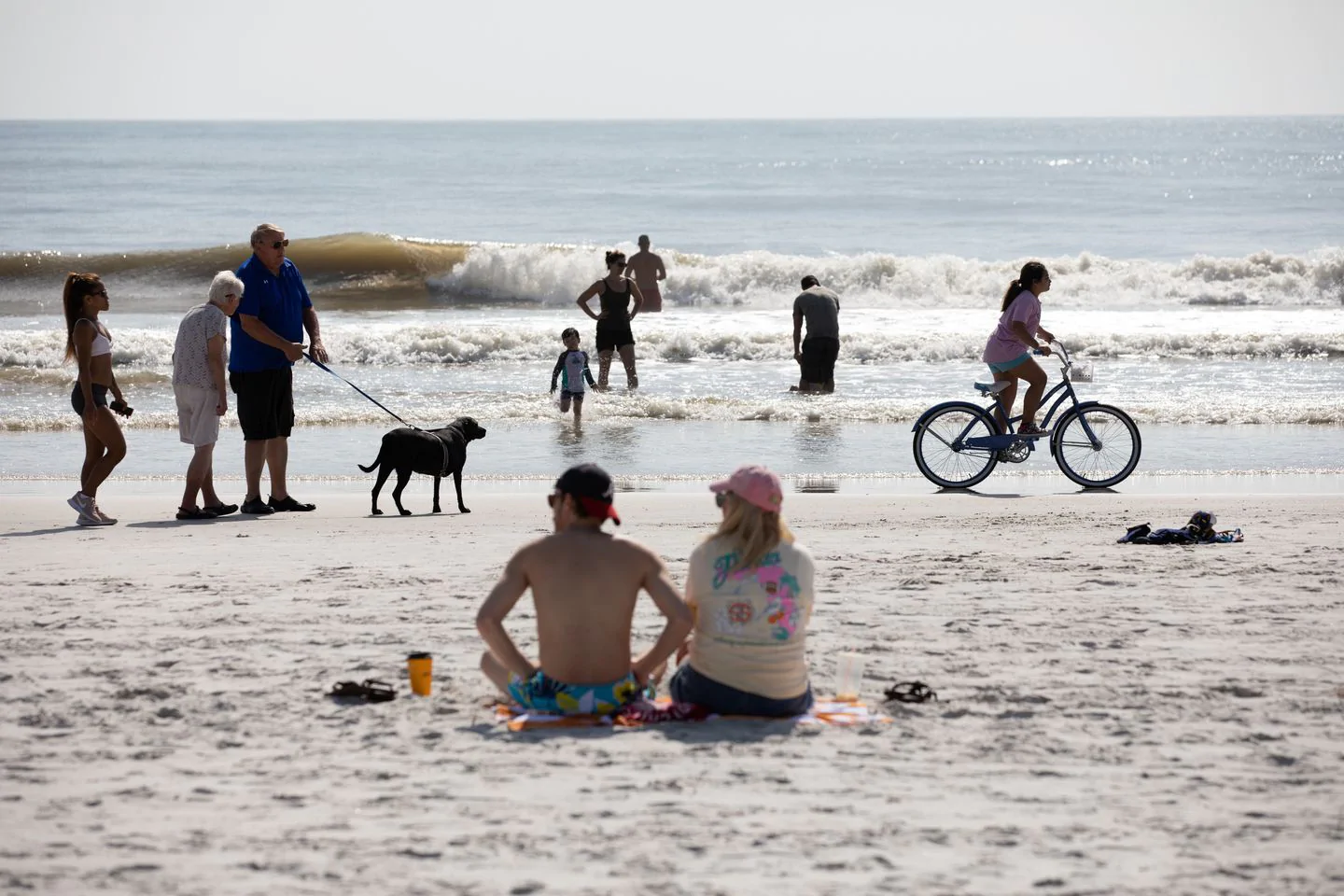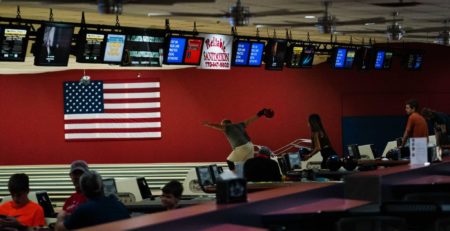In Tennessee, customers will be able to sit down for meals in restaurants starting Monday. In Missouri, the coming week will be the last before the state allows “almost every business” to reopen. And in Idaho, churches and other places of worship could be unlocking their doors by next weekend.
The easing will not be universal and is cleaved largely along party lines, with some Republican governors moving to reopen key sectors and Democrats moving more slowly. In states such as New York, where covid-19 has exacted its heaviest toll, there is no letup to the rules in sight. Even in places where restrictions are being relaxed, governors have emphasized the need to proceed cautiously, lest they unleash a second wave.
“We simply cannot open everything all at once and reverse the good work we have done collectively over the past month to slow the spread of coronavirus,” Idaho Gov. Brad Little (R) said in a statement announcing his state’s plans.
Yet even the most tentative steps have unnerved public health experts, big-city mayors and others who worry that with case numbers continuing to rise, it is too soon to reverse course on a virus that has killed nearly 53,000 Americans.
“We don’t have the resources in place to do the level of testing and contact tracing we need to make sure we’re monitoring this effectively,” said Jeffrey Shaman, an epidemiologist at Columbia University. “We’re flying blind.”
The reopenings come at a time when stay-at-home rules still enjoy widespread support, despite acute economic pain. Polls show that majorities of Americans worry more about moving too quickly to get back to business than too slowly.
But the restrictions have increasingly come under assault, with business groups lobbying against them, protesters flocking to state capitols to demand their end and President Trump expressing impatience with measures his own scientific advisers have consistently recommended. He was sharply critical of Georgia Gov. Brian Kemp (R) for reopening too quickly. But he also has prodded governors to open by May 1, and has tweeted that citizens should “liberate” states whose leaders have ordered people to stay home.
“The governor’s getting pressure to reopen,” said Steven Reed, the Democratic mayor of Montgomery, Ala. “But we have to think of the long term. We can’t do that and then risk the unintended consequences of setting us back on the progress that we’ve made.”
Reed said far more testing capacity is needed to chart the virus’s spread before he would be comfortable with seeing restrictions eased. The decision to reopen hair salons and other businesses in Georgia, just over an hour’s drive down the highway from his city, was “reckless” in the absence of such capabilities, Reed said.
So far, Alabama Gov. Kay Ivey (R) has been a holdout as neighboring states have announced or gone ahead with plans to allow some semblance of normal life to return. But with her state’s stay-at-home order expiring Thursday, she faces a choice over whether to renew it.
Many others are in the same position and will probably be watching closely how the loosening plays out elsewhere.
States moving quickly to reopen are putting themselves in the unenviable position of being “natural experiments” for the rest of the country, Shaman said.
Many of the states that have eased their rules say they believe they are past the peak as new case numbers decline. But Shaman noted that those declines have come only because of sweeping social distancing rules, and that as the rules are relaxed, controlling transmission will become more difficult. How much more difficult remains to be seen. But Shaman warned that “a trial-and-error approach is less than ideal.”
In addition to Georgia, Oklahoma was among the first states to ease up. Gov. Kevin Stitt’s (R) Wednesday announcement that salons, barbers and pet groomers could reopen as of Friday came with little warning and set off an instant scramble for Teresa Bailey.
The owner of Creek County Choppers, along historic Route 66 in the Tulsa suburb of Sapulpa, hadn’t cut her customers’ hair since a state-mandated shutdown a month ago. But with masks, fresh capes and a lot of cleaning product, she believed a reopening could be pulled off safely.
“It is going to be like a Lysol bomb went off in that place for a while,” she said. “I may not worry enough. I do think it’ll be fine.”
Not everyone is so sure. Tulsa Mayor G.T. Bynum (R) said Friday that he would allow his city’s shelter-in-place order to expire at the end of the month and businesses to reopen, despite deep concerns. Federal guidelines suggest no easing of restrictions until there has been a 14-day decline in new cases. In the Tulsa area, he noted, cases had been going up.
But the state’s action, he said, had left him with little choice — and that could have dire consequences.
“Tulsa does not exist in a bubble,” he said. “We should expect more people to come into contact with one another and we should expect the illness to spread. . . . Tulsa’s cases will not go down. They will increase.”
In other places, states and cities will have different rules — a reflection of demographic and political fault lines. In Missouri, for instance, Republican Gov. Mike Parson has said he would let the vast majority of businesses reopen May 4, after his statewide stay-at-home order expires.
But a local order remains in effect until May 15 in Kansas City, the state’s most populous city, where the virus is disproportionately sickening the African American community.
“I’m not going to abandon my community just because the rest of society says we don’t care anymore,” said Quinton Lucas, who grew up on Kansas City’s hardscrabble East Side and now serves as the city’s Democratic mayor.
Leaders in St. Louis and the surrounding county are still weighing what to do when the state’s order expires. Even as it does, more stringent rules will remain in effect until the end of May just across the Mississippi River, in Illinois.
In Texas, Gov. Greg Abbott (R) is expected to release an order Monday detailing how the state will reopen — a process that started Friday when Texas retailers started offering to-go services and hospitals resumed elective surgeries. Abbott has said movie theaters and restaurant dining rooms could reopen shortly after Texas’s stay-at-home order expires April 30.
But commissioners in Dallas County voted Tuesday to extend their stay-at-home order to May 15. The governor has indicated his coming order would supersede any local ordinance and any that violations would result in fines and jail time.
Massey Villarreal, who sits on the governor’s task force, said Abbott’s plan — to gradually open businesses that require minimal contact — is guided by scientific data and the advice of public health experts. Villarreal said waiting too long to reopen the 10th-largest economy in the world will destroy tens of thousands of jobs in the middle of an oil industry crisis.
“The question the governor and task force are asking ourselves is if in prescribing people rush back to work, are we going to kill anybody?” said Villarreal, chief executive and president of Precision Task Group, a business management consultancy. “We don’t want to just get back to doing things the old-fashioned way because there is no more old-fashioned way. This is a new normal. And we have to be very careful.”
In Ohio, which led the nation in its aggressive approach to closures back in March, Gov. Mike DeWine (R) will announce details Monday of a partial reopening that is due to kick in Friday.
Mark H. Weir, an epidemiologist at Ohio State University who has been advising the governor, said he is urging a methodical approach to reopening, along with preparation for the need to clamp down if new outbreaks emerge.
“The staged approach from the outside may look like it’s too slow for some and may look too fast for others,” Weir said. “It’s designed to be in the middle of those two — slowly opening so we can monitor to see if another large-scale peak is likely to be occurring.”
Above all, Weir emphasized, a transition is unfolding in large parts of the country — from directives that carry the force of law to a recognition of individual agency.
“There is a humongous amount of power in every individual citizen to be able to defeat this thing,” he said. “Everything that we’ve been doing by way of social distancing is protecting our neighbors and therefore protecting ourselves. Each business owner can protect themselves, their staff and everyone who comes into their shop.”
In other places, the reopening has been coupled with a doubling down on enforcement of the rules.
Several shoreline communities in Florida’s Duval County — an area that includes Jacksonville — opted to open their beaches on a limited basis last week after Gov. Ron DeSantis (R) gave the go-ahead.
The move was not without controversy. For a moment in March, Florida beach communities were at the center of coronavirus ire after thousands of spring breakers partied by the ocean instead of socially distancing. Critics blasted DeSantis and local government leaders for allowing the beaches to stay open as the rest of the country was closing down.
When county leaders made their choice to open back up, #Floriduh and #FloridaMorons trended on Twitter.
But the mayors pointed out that, in many cases, their beaches are the largest swath of public land, and not dissimilar from parks. Charlie Latham, the Republican mayor of Jacksonville Beach, said he scoffed when he saw that New York Gov. Andrew M. Cuomo (D) was among the critics — even as Central Park remained open in the nation’s hardest-hit city.
Community leaders also pointed out that the rules against congregating have been strictly enforced. Beachgoers can’t bring umbrellas and beach chairs — anything that would lead to crowding. Police on ATVs have even cracked down on children building sand castles.
“You’ve got to keep moving,” said Elaine Brown, the mayor of Neptune Beach in Duval County. “If there’s a situation where someone’s brought out the suntan lotion, a book and chairs, we’ve got an officer that goes up to them almost immediately and says, ‘That’s not allowed now.’ ”
Hundreds of people flocked to Jacksonville Beach on Saturday morning, walking alone or in family groups along the shore and mostly heeding the admonishment to keep moving. With 22 miles of beaches in the Jacksonville area, there was plenty of room to socially distance and only the occasional scofflaw. Children dug plastic shovels into the sand, a group of teenage surfers congregated by their boards, fisherman sat on coolers, their lines bobbing in the waves.
Around 9:30, an officer in an ATV pulled up next to a bikini-clad woman sunbathing by the dock. After exchanging a few words, she and the man she was with were on their way, walking with the other beachgoers.
Even with strict precautions, however, some activities will be difficult, if not impossible, to resume safely anytime soon. In Arizona, Phoenix Mayor Kate Gallego said she couldn’t help but wonder whether decisions in certain states to reopen bowling alleys and nail salons had been driven “more by politics than by good data.”
Neither has been allowed to reopen in Arizona — at least not yet. But with Arizona’s stay-at-home order expiring this coming week, Gov. Doug Ducey (R) faces a choice on both, and much more.
Gallego, a Democrat, said she would urge Ducey to be cautious and to look at what happens when governments try to rush the process of returning to business as usual. Singapore, she pointed out, had once thought it had the crisis under control, only to see case numbers explode.
“I am as eager as anyone to return to normal life,” Gallego said, noting she has a relative in a hospital whom she can’t visit and a 3-year-old at home. “But we have to do it safely.”
Wootson reported from Jacksonville Beach, Fla., and Eger reported from Tulsa. Arelis R. Hernández contributed to this report from San Antonio.






